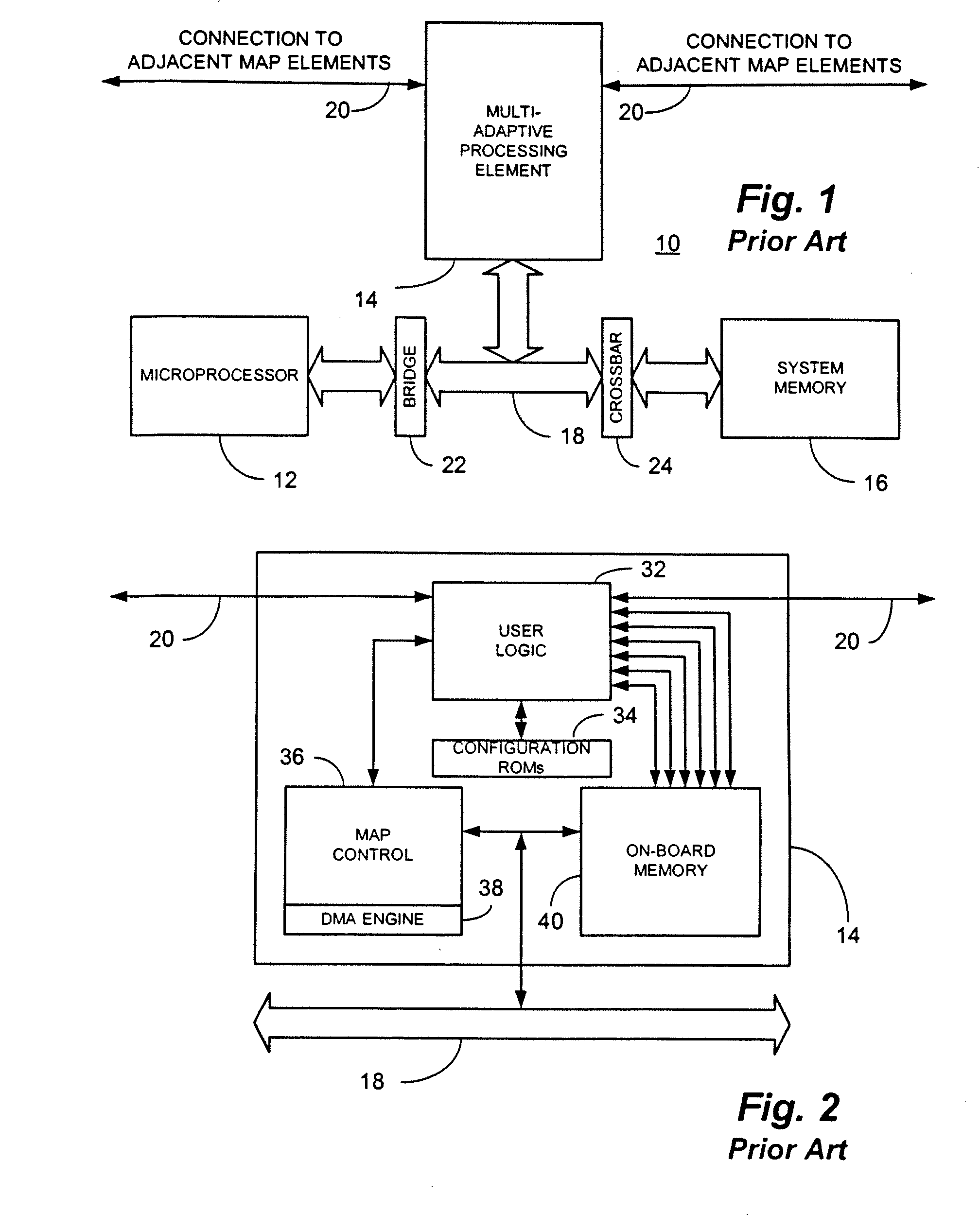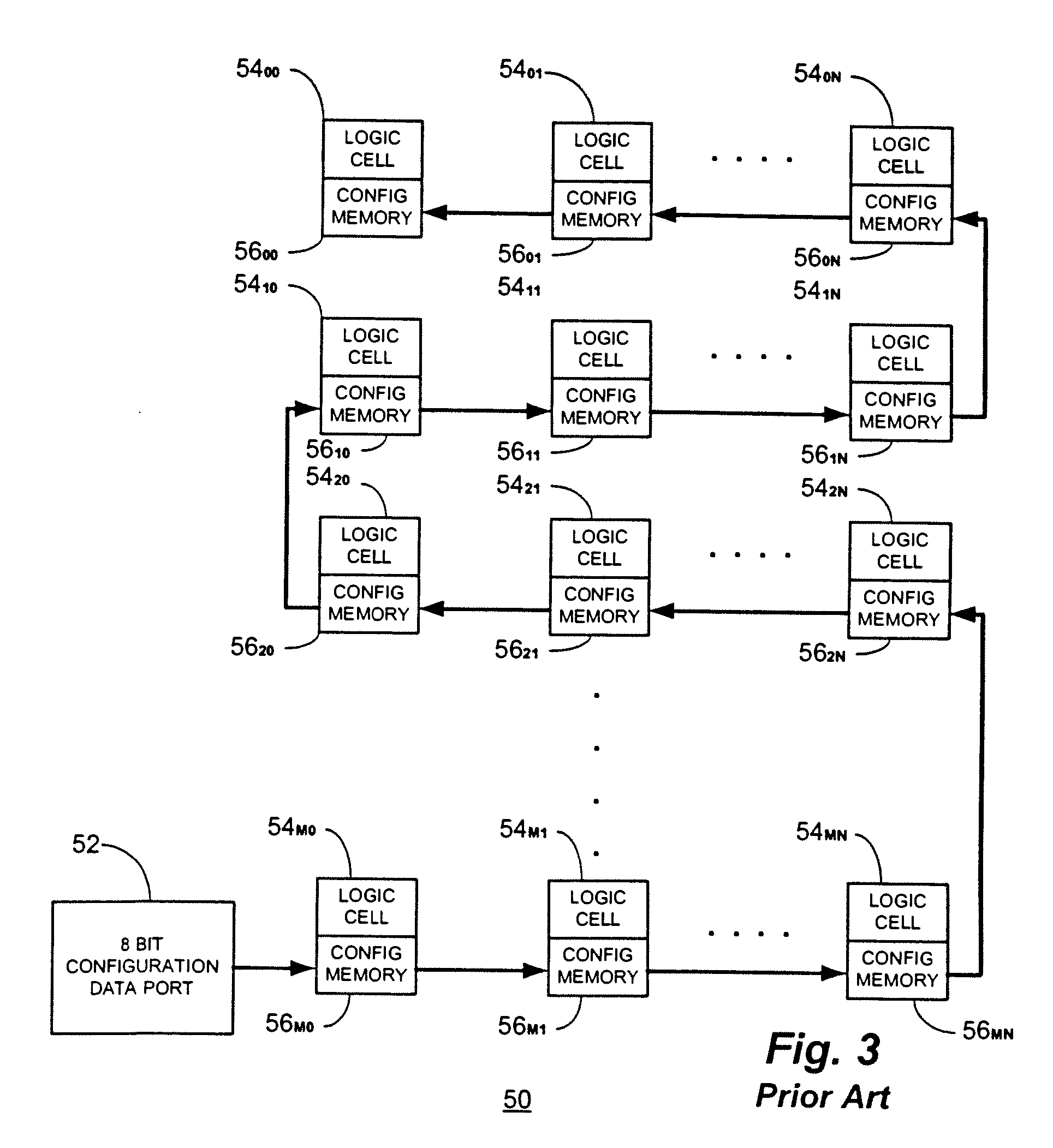Reconfigurable processor module comprising hybrid stacked integrated circuit die elements
a processor module and integrated circuit technology, applied in the field of reconfigurable data processing systems and methods, can solve the problems of requiring millions of processor clock cycles in order to complete reconfiguration, and the application space over which such reconfigurable processors can be practically employed, and achieve the effect of reducing the test time of dies
- Summary
- Abstract
- Description
- Claims
- Application Information
AI Technical Summary
Benefits of technology
Problems solved by technology
Method used
Image
Examples
Embodiment Construction
[0028] With reference now to FIG. 1, a simplified functional block diagram of a portion of a prior art reconfigurable computer system 10 is shown. The computer system 10 incorporates, in pertinent part, one or more microprocessors 12, one or more multi-adaptive processing (MAP™) elements 14 and an associated system memory 16. A system bus 18 bidirectionally couples a MAP element 14 to the microprocessor 12 by means of a bridge 22 as well as to the system memory 16 by means of a crossbar switch 24. Each MAP element 14 may also include one or more bidirectional connections 20 to other adjacent MAP elements 14 as shown
[0029] With reference additionally now to FIG. 2, a more detailed, simplified functional block diagram of the multi-adaptive processing element 14 illustrated in the preceding figure is shown. The multi-adaptive processing element 14 comprises, in pertinent part, a user logic block 32, which may comprise an FPGA together with its associated configuration ROM 34. A MAP co...
PUM
 Login to View More
Login to View More Abstract
Description
Claims
Application Information
 Login to View More
Login to View More - R&D
- Intellectual Property
- Life Sciences
- Materials
- Tech Scout
- Unparalleled Data Quality
- Higher Quality Content
- 60% Fewer Hallucinations
Browse by: Latest US Patents, China's latest patents, Technical Efficacy Thesaurus, Application Domain, Technology Topic, Popular Technical Reports.
© 2025 PatSnap. All rights reserved.Legal|Privacy policy|Modern Slavery Act Transparency Statement|Sitemap|About US| Contact US: help@patsnap.com



